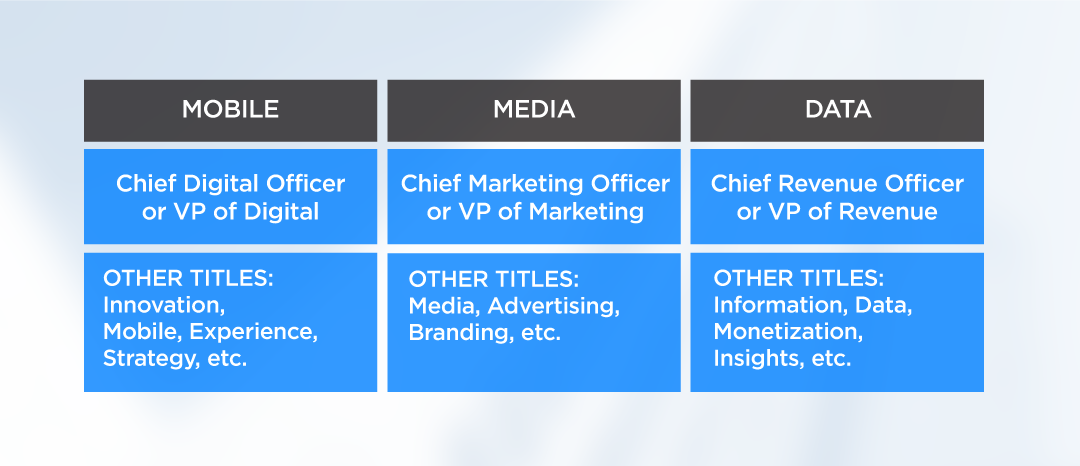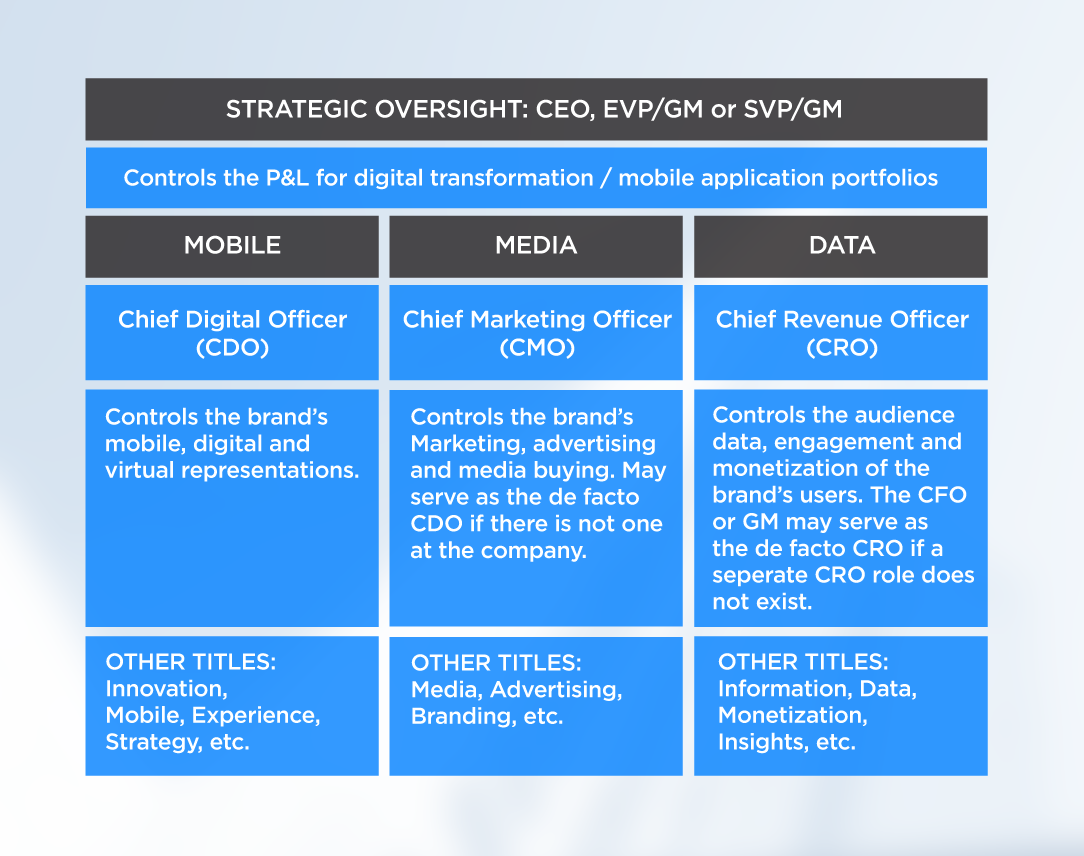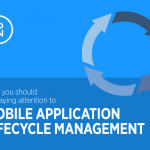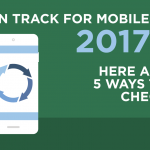In my last blog post, Why You Should Be Paying Attention to Mobile Application Lifecycle Management, I discussed the importance of involving the right groups from across your organization as early as possible in every mobile initiative. Thinking about mobile in terms of a lifecycle is a strategic shift—but a necessary one if your organization is to undergo the Digital Transformation required to support the experience and journey today’s mobile users demand.
Increasingly, the only way to deliver that in-demand experience and journey is through “authentically mobile” experiences—those that are only possible on a mobile device. That means your organization must take a mobile-first, native-first and fully integrated-first approach to the mobile lifecycle. Mobile is the first screen today—not the second, the third or the companion screen—and experiences that fail to leverage the unique native capabilities of mobile fall short of user expectations. Mobile internet traffic has surpassed desktop traffic, and 85% of it is in native applications—not mobile browsers such as Apple Safari or Google Chrome. Your focus should be on native mobile applications first, mobile web second and traditional web last.
Because mobile has such transformative power, all functional areas should have a role in the success of mobile application portfolios—from Marketing to Facilities to Finance. Let’s explore where those functional areas fit into the mobile application lifecycle and what you could gain by structuring your organization for success in the mobile era.
Who to Involve in Mobile Application Lifecycle Management
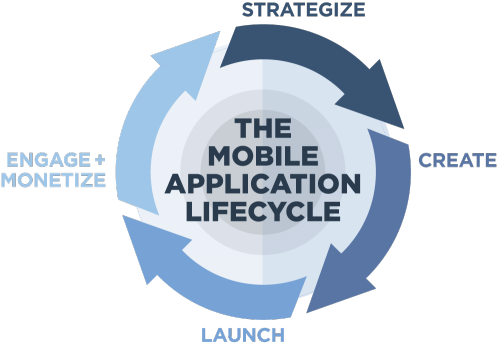 In the early days of mobile applications, it was possible (not advisable, but possible) to treat mobile as an isolated tactic and channel. Before mobile use was ubiquitous and brands really understood how to make mobile data actionable, you could get away with treating mobile as another marketing avenue like PPC or direct mail.
In the early days of mobile applications, it was possible (not advisable, but possible) to treat mobile as an isolated tactic and channel. Before mobile use was ubiquitous and brands really understood how to make mobile data actionable, you could get away with treating mobile as another marketing avenue like PPC or direct mail.
Those days are long gone, however, and mobile applications are no longer siloed or set-and-forget. Even the simplest mobile application lifecycle now involves a complex interplay of mobile technology, media strategy and data science, and can impact areas of the business from marketing to operations to facilities planning alike. Here’s who you should always involve in your mobile planning and initiatives to ensure that you are always surfacing—and able to act on—all of the insights mobile can power.
Group 1: Mobile Team
Your Mobile team (it may be called the Digital or Virtual team at your organization) will define the value your brand will deliver to users through its mobile portfolio—entertainment, utility, information, etc.—and how that value will be brought to life in a mobile application experience. They will determine the devices (smartphone, tablet, watch, TV, etc.) and operating systems (iOS, Android, both, something else) your application should run on. Presumably you plan to achieve some business goal with this mobile initiative, such as generating revenue, increasing brand awareness, driving foot traffic, engaging Millennials, etc. Your Mobile team will be responsible for figuring out how your application will achieve that goal.
Now, you could feasibly stop here. It would be woefully misguided to do so, but you could actually build and launch an application with only your Mobile team. How would you build, engage and monetize your audience, though? How would you develop and act on the insights and data available through your application, both indoors and outdoors? By involving your Media and Data teams from the outset.
Group 2: Media Team
Your Media team should be there from day one to make sure you have appropriately strategized how you will build, engage and monetize your application audience. With literally millions of other applications to catch their eye, you can’t depend on your users to randomly discover your app on their own. Organic, viral application discovery tends to happen by accident. You should assume that mobile audiences are overwhelmingly built through paid user acquisition (UA) campaigns and tactics and expect to invest in performance-based audience building campaigns to acquire your app users. It will be critical to understand the lifetime value of each user so you can determine what you are willing to pay per user for your expected return on investment (ROI).
Post launch, it will be up to your Media team to monitor which of these campaigns is performing best so that you can then optimize your ongoing spend accordingly. You don’t just want to drive app downloads or brand awareness as part of this process—you want to acquire the users most likely to engage and spend in and through your application.
Group 3: Data Science Team
Your Data Science team should be there to plan what data you will collect through your application and how you will use it not only to optimize future versions of the application, but also business processes, marketing strategy and a host of other initiatives not traditionally thought of as “mobile.” Data is key to preserving and expanding the mobile revenue streams associated with your application audiences over time. Your ultimate goal for these mobile engagements and interactions should be to deliver the right action at the right time to the right user based on who and where they are and what they like and don’t like, on a 1:1 basis, indoors or outdoors, in real time. The key to these insights is data: their usage behavior and value to your brand.
Learn more! Download the eBook Mobile Data: the Missing Link in Your User Acquisition and Engagement Strategies.
A smartphone is a digital device, but it moves through the physical world and is embedded with technologies, like GPS and accelerometers, that mobile apps can leverage for richer experiences. Additionally, mobile apps generate valuable data as users interact with them. Each interaction (or “event”) results in a data point—complete with location—you can use to improve and tailor the mobile experience. The Phunware platform, for example, grows by 40 billion events per month, thanks to the 700+ million unique devices touching it through more than 5000+ application portfolios.
These mobile events and data points are actionable far beyond the mobile channel. They can (and should) impact marketing strategy as a whole, media investment, operations planning—even real estate decisions. For example:
- Operations. Leverage data from mobile location-based technologies like beacons to streamline inventory control in a retail environment, monitor and manage patient traffic patterns in a hospital, or speed the flow of passengers through an airport or cruise terminal.
- Marketing. Use data from your mobile campaigns and app engagement to understand what offers your users care about, what app features they value, and where they live, work and play. Optimize your entire marketing approach based on these deep insights.
- Revenue. Mobile is a powerful channel for e-commerce, of course, but can also serve as revenue-generating platform through in-app media monetization and mobile engagement campaigns that drive real-world purchase conversions with full attribution at retail point of sale (POS).
Finally, your Legal team plays a role in brand protection, privacy and intellectual property enforcement, while your Facilities team plays a role in physical infrastructure investments needed to support authentically mobile user experiences—such as high and low density Wi-Fi, virtual and physical beacons and bandwidth.
Mobile as a channel goes far beyond the device in your users’ pockets…but it’s up to you to make sure you are tapping the right teams at your organization to take advantage of mobile’s reach.
Structuring Your Team for Mobile Application Lifecycle Management
Now that you know which groups to involve in mobile application lifecycle management, let’s take a minute to discuss org structure. Your Mobile, Media and Data Science teams are likely separate and siloed under these leaders:
This is normal—companies don’t set out to exist in silos, but unless you make a concerted effort to merge them, application, media and data science teams will likely remain separate. This separation is something you will want to address quickly, however, if you want to create and maintain a competitive advantage at that high value touchpoint between your brand and your anytime, anywhere audiences and communities on mobile. Importantly, the companies seeing global, enterprise-level success in mobile have these same three teams, but roll them up under one person who oversees and manages them as an integrated unit:
Every company aspires to have a CDO, CMO and CRO, but even without these roles, it’s critical to have one executive at the top of your organization with direct or dotted-line oversight of those controlling mobile, media and data. If you’re not working in synergy and driving towards the same goal through every stage of the lifecycle, you’re leaving significant money on the table.
Check back soon for the next installment in my blog series, where I’ll cover how to structure an RFP to find the best mobile lifecycle management partner.
To learn more about best practices at every stage of the mobile lifecycle, check out this eBook: Mobile First: Harnessing the App Lifecycle for Transformative Business Success.



